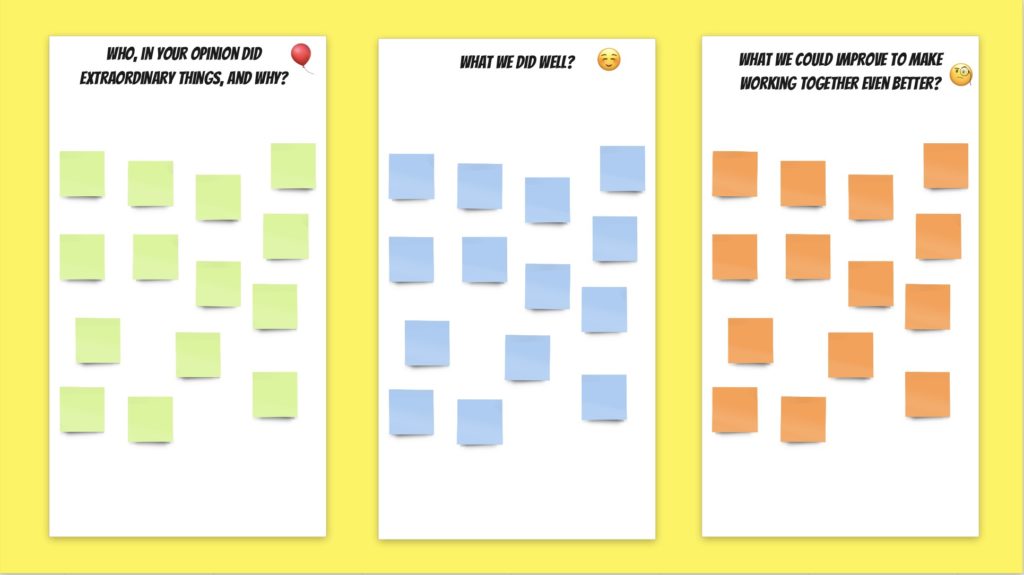We run retrospectives regularly after each sprint. It is a great opportunity to share perspectives and emotions about what has happened during the sprint. We know that.
Why do I mention it? Well, one of my teams has strong technical dependencies with the external provider of a specific part of the product, and at the same time with a country where we deliver it.
To get the work done, all three parts need to be synced as Swiss watches. But how to reach our common goal?
So here is what we did.
Daily “stand-ups” and part in Reviews
We started with daily syncs where the Product Owners, Delivery Managers, and technical leads from each team took place to exchange info and align plans for that particular day. We had an agreement that if there is anything that blocks another team, it becames the highest priority. Therefore focus for that day should be to remove this blocker.
After some time we figured out that we would need our partners to participate in our review meetings. So we invited them. My role in this step was to set proper expectations. It means that our partners knew what they can expect to see in the Review meeting and all questions not related to the presented scope will be noted and discussed outside of the review. This pre-alignment helped me a lot to keep the review meeting within time and scope. I have got positive feedback from my Product owner as well as from our partners.
Of course, we had not been doing this from the beginning. It took several retrospectives in my team to find ways to be more effective. We did missteps, and we were frustrated. But we tried, we started over and over again, we found our way to deliver not only our part but with our partners; we deliver on time!
Retrospectives
As I mentioned above, we had several retrospectives where we discussed what we may improve on our side to make the cooperation with all parties more effective.
Team’s Retrospective
Firstly I aligned with the Product Owner about a discussion I would like to have with the team. The focus on our part would be what we can improve, what is good and with what we should keep running on.

Then I prepared a board with three sections. I always use MIRO. It is a nice easy-to-use tool.
Before we started, I introduced the topic and what the team should reflect on.
We started with the Future Directions. The team should reflect on how we want to continue based on the current state. What areas do we want to work on or what has become obsolete.
In Lessons learned and key takeaways we reflect and looked at our part in the whole cooperation. We summed up inputs from technical, communication, transparency, and priority points of view.
I love to encourage people to name accomplishments and give Kudos to others. We are so focused on what we can improve in our work life that we often forget to say “Great job!”, “Well done!” “I appreciate you for this and that..”. Therefore I want to provide this time and opportunity to stop for a while and recognize and appraise others. And for this the Thank you and Kudos part is dedicated.
After every team member describes their inputs, we discuss who can be a driver for topics we collect and categorize in the Future directions part.
We end up with a driver for each topic, action items, and inputs for the Retro with our partners.
This Retrospective had taken place 2 weeks before we met with our partners.
Retrospective with Partners
After the Retro with the team, I contacted our Partners to set up a Retro with them. I suggested that only 3 musketeers from each side should participate. Meaning only those participating in the Daily syncs meetings.
After this alignment, I have everything I need to set it up and facilitate.

We decided to go with a simple format for discussion.
First, we accomplished people for extraordinary things. This part was lovely as we had never had a chance to talk about what we liked. We were so focused on fixing issues and reaching our common goal that this part is usually missing in daily work.
In the What we did well section, we shared not only our parts but also what we think others did well and we liked. We got feedback about our part in the process. Based on that we’re able to consider whether the points of view we discussed in the team retro are valid and visible also for the outside world.
Our cooperation was meant to continue even after reaching the common goal. So we had a look at what we can improve together to make our collaboration even better. Again, it was not only self-reflection but also constructive feedback to all of us.
Every person spoke up and explained his/her perspective. After the discussion, we collected action points and responsible persons to drive them.
After this experience, we agreed to continue with this approach and organise another Retrospective with Partners again.

